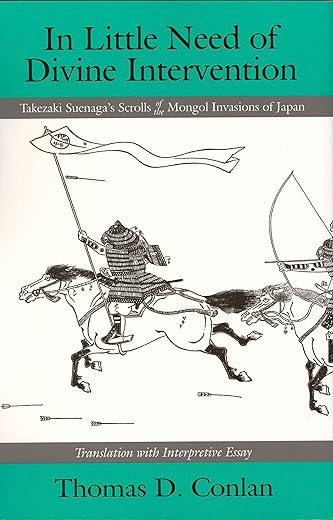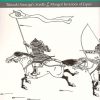In Little Need of Divine Intervention: Takezaki Suenaga’s Scrolls of the Mongol Invasions of Japan: 113 (Cornell East Asia)
£23.70
In Little Need of Divine Intervention presents a fundamental revision of the thirteenth-century Mongol Invasions of Japan by revealing that the warriors of medieval Japan were capable of fighting the Mongols to a standstill without the aid of any “divine winds” or kamikaze. Conlan’s interpretation of the invasions is supplemented with translations of the picture scrolls commissioned by Takezaki Suenaga, a warrior who fought against the Mongols. In addition, translations of nearly seventy administrative documents are provided, thereby enabling students of Japanese history reconstruct the invasions using contemporary sources. A rare copy of Takezaki Suenaga’s Scrolls, reproduced in full, reveals hitherto unknown missing scenes. Furthermore, the scrolls’ images can be now read in tandem with its narrative passages, translated in English for the first time. Please note that the entire book was intentionally printed from back to front, so that the reproduced scrolls unfold in Japanese order, from right to left. Thus the book’s spine is on the right. This monograph will prove to be of great interest for students and scholars of medieval Japanese history, warrior culture, and the nature of Japan in an East Asian context.
Read more
Additional information
| Publisher | Hawaii Distributed Titles (31 Mar. 2010) |
|---|---|
| Language | English |
| Paperback | 324 pages |
| ISBN-10 | 188544513X |
| ISBN-13 | 978-1885445131 |
| Dimensions | 13.97 x 1.85 x 21.59 cm |







by mr dj wood
Very interesting and informative narrative, just imagine the Mongols v the Samarai, the two most fierce warriors ever.
by Steve O
This book represents the very first time a complete version of the Mongol Invasion Scrolls was made available in English, together with a translation of the accompanying text and captions. The original picture scroll was commissioned by a warrior who took part in the actual defence of Japan in order to further his claim for rewards. That alone would be enough to make this an invaluable primary source and fine example of contemporary art but the author has gone much further and included translations of a host of other related Japanese documents pertaining to the invasion attempts. Plus a useful commentary explaining the background to the events, maps and a cast of the leading Japanese commanders and their clans. He also makes an argument for his opinion that the samurai could have fought off the Mongols without the aid of a couple of fortuitous typhoons (hence the title) that are sometimes credited with destroying the invasion fleet. This may be controversial to some but makes for interesting reading.
Historians will find the primary source material invaluable but others such as wargamers will find the information on the Japanese commanders, clans, banners and “mon” emblems they used of great help especially as they won’t find complete information for this period anywhere else (most other English-language books on these aspects seem to dwell on the 16th century “Sengoku” era far too much).
One final note – Japanese picture scrolls (in common with their books) run from right to left so that is how the book of necessity is laid out.